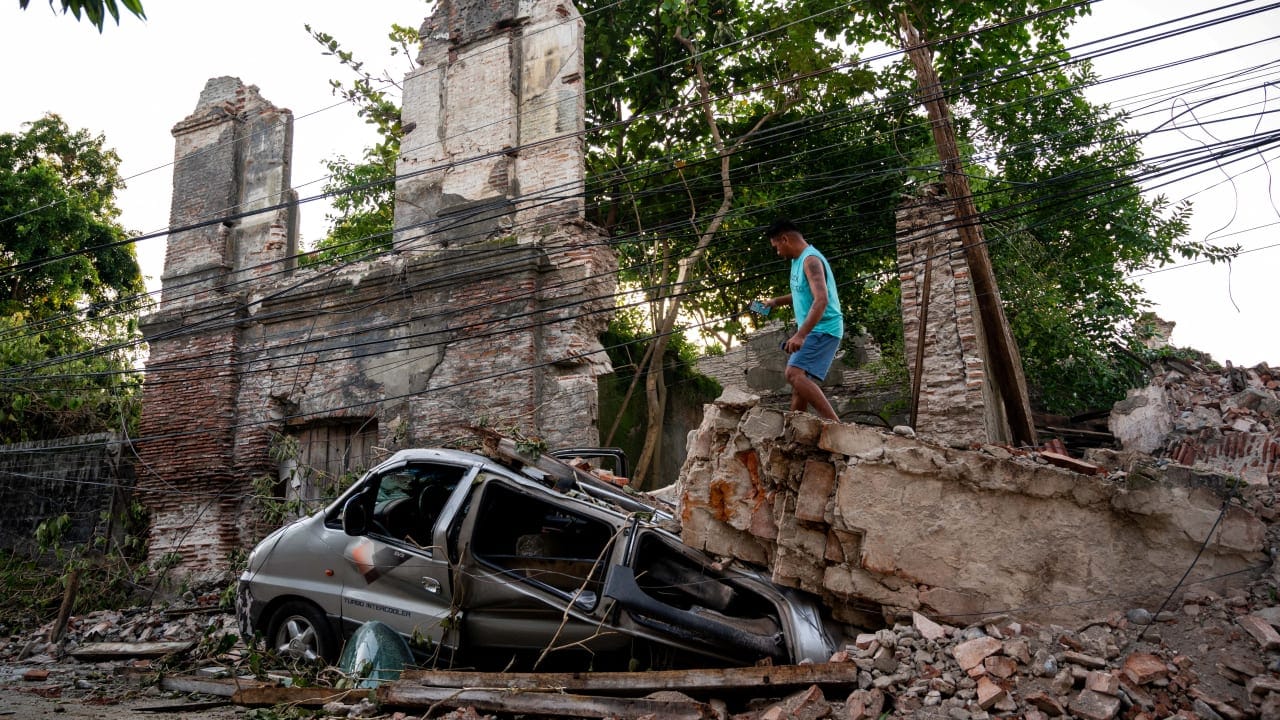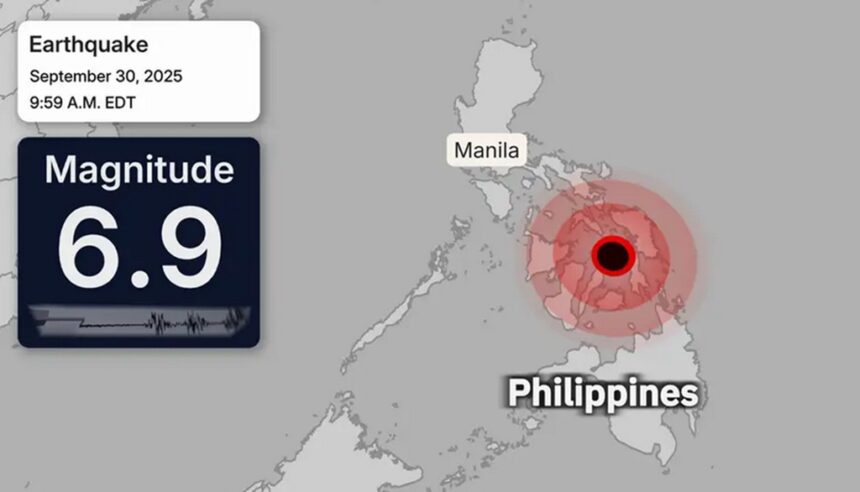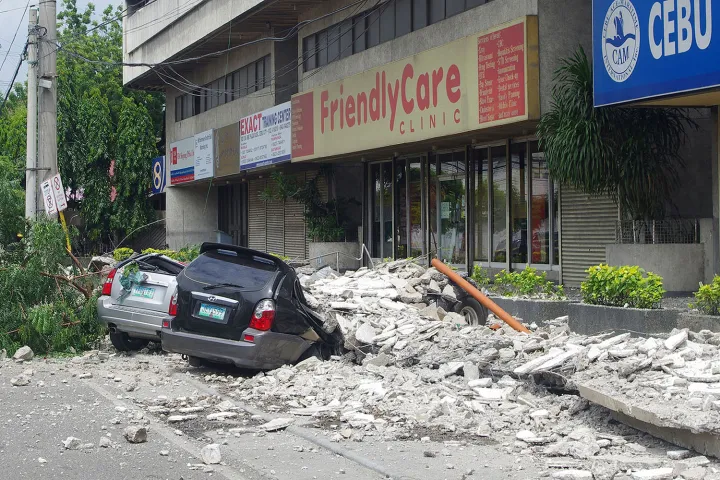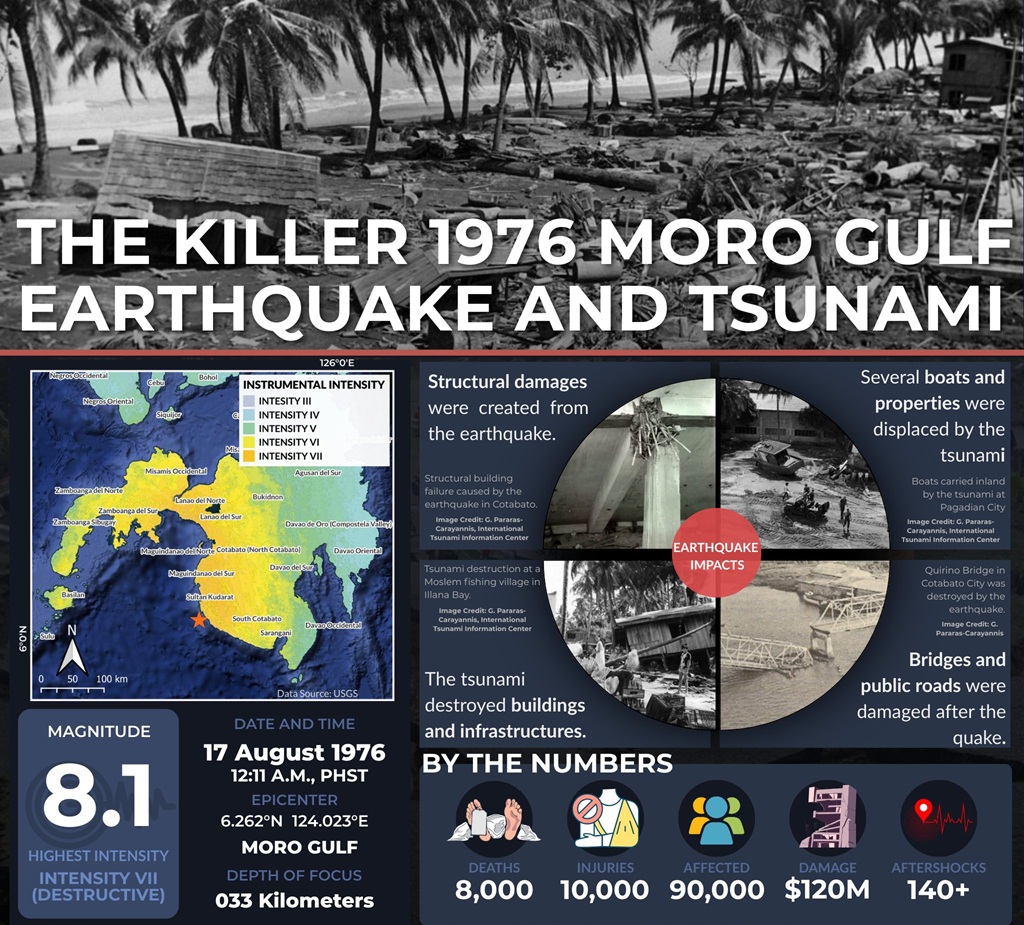CEBU – A strong 6.9-magnitude earthquake struck the central Philippines on Tuesday night, shaking coastal towns and cities and causing heavy damage across the Visayas. The earthquake hit at 9:59 p.m. local time. At least 26 people have been confirmed dead, and many more were injured, as search teams work through collapsed buildings under the risk of further aftershocks.
The epicentre was in the Visayan Sea, about 7 miles southeast of Calape on Bohol and roughly 54 kilometres west of Ormoc on Leyte. The depth was shallow, only 10 kilometres below the seabed, which increased the shaking on land.
PHIVOLCS reported intensity VIII shaking on the Modified Mercalli scale in parts of Cebu. A tsunami threat did not develop, although authorities issued a brief advisory for minor sea-level changes along the coasts of Cebu, Leyte, and Biliran.
Northern Cebu took the hardest hit, with the quake striking as families were settling in for the evening. In San Remigio, a sports complex collapsed during a basketball game, killing at least 13 people, among them three Philippine Coast Guard personnel and a firefighter.
Others were trapped beneath rubble. An eyewitness near the site said it felt as if the ground swallowed the building. Power cuts and darkness slowed rescue work through the night, and officials warned the death toll could rise.

Widespread Power Outages
Damage was reported across the Visayas. In Cebu City, a fire broke out at a major mall, and a McDonald’s branch suffered severe structural damage. Historic churches also cracked and partially failed.
The Parroquia de San Pedro Apostol on Bantayan Island lost parts of its façade, and sections of the Archdiocesan Shrine of Santa Rosa de Lima in Daanbantayan caved in. The National Historical Commission issued urgent guidance to protect heritage sites.
Schools reported fallen debris and fissures, leading to class suspensions in Lapu-Lapu, Talisay, Mandaue, Minglanilla, and Consolacion.
The National Grid Corporation of the Philippines recorded separations between the Leyte-Samar-Bohol grid and the Cebu-Negros-Panay grid, which caused widespread power outages.
Cars Crushed in Cebu
Dozens were hurt, many during evacuations or in building failures. The Philippine Red Cross treated more than 50 people for cuts, fractures, and shock at field clinics in Cebu.
Thousands of residents, including night-shift staff and condominium tenants, rushed into open areas such as Cebu IT Park. Liquefaction hazards were a major concern in low-lying zones.
USGS models indicated that waterlogged ground could behave like soft slurry, increasing the risk of further damage. At least four aftershocks stronger than magnitude 5.0 struck overnight, including a 5.2 event just 13 minutes after the main shock, unsettling communities already on edge.
The Philippines sits on the Pacific Ring of Fire, where several tectonic plates meet. The country feels an average of about 20 earthquakes a day, although most are weak. Large events bring back painful memories.
Philippines 1976 Moro Gulf Earthquake
The 1976 Moro Gulf quake, magnitude 8.0, killed up to 8,000 people, many due to a tsunami, and left about 93,000 homeless. In 2013, a magnitude 7.2 earthquake in Bohol and Cebu killed more than 200, displaced 350,000, and levelled centuries-old churches.
More recently, a 7.0 quake in northern Luzon in 2022 caused five deaths and more than 100 injuries, and a 6.7 offshore event in 2023 claimed eight lives.
Seismologists point to the Philippine Fault Zone, a 1,200-kilometre strike-slip system, as a major risk. The 1990 Luzon earthquake, magnitude 7.8, killed nearly 2,000 people within seconds and brought down the Ruby Tower in Manila. PHIVOLCS experts say ongoing retrofitting and early alerts help, but a much larger event remains possible in the future.
By dawn on Wednesday, President Ferdinand Marcos Jr. promised rapid assistance. The government deployed military assets for relief and prepared a state of calamity declaration for the worst-hit areas, including San Remigio.
Offers of technical support came from international partners such as the United States and Japan. In the affected provinces, families gathered in temporary shelters, sharing food, phones, and news, while waiting for power to return and for the ground to settle.
















